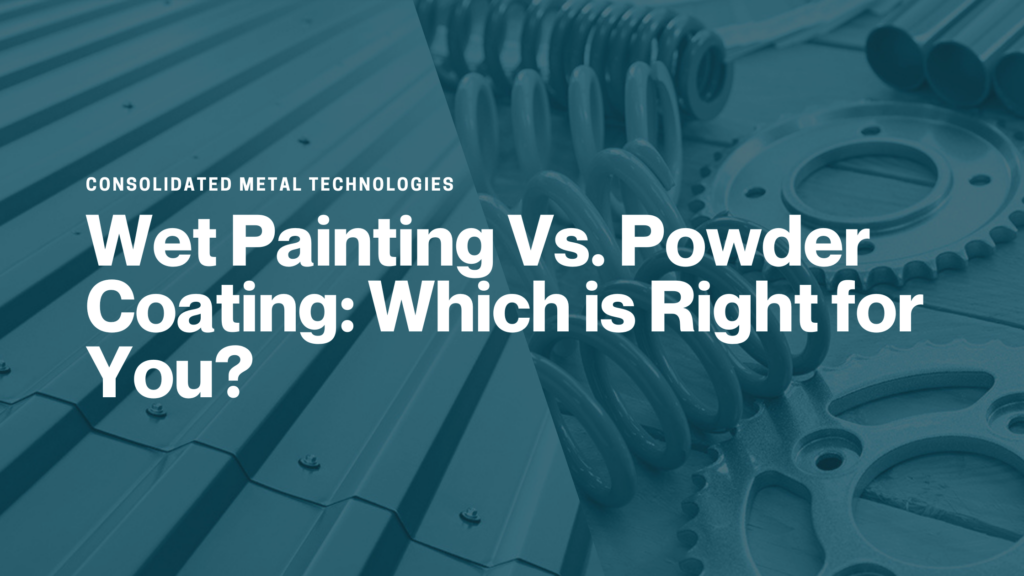
When deciding on a finishing process for your project, two popular options often come up: wet painting and powder coating. Each method has its strengths, costs, and ideal applications, and choosing the right one depends on the specific needs of your project.
Powder Coating: Durable, Versatile, and Eco-Friendly
Powder coating is a dry finishing process that uses finely ground particles of pigment and resin. These particles are electrostatically applied to a surface and cured under heat to create a durable, smooth finish.
Benefits of Powder Coating:
Durability: Powder coating is known for its excellent resistance to fading, chipping, and cracking. This makes it ideal for products exposed to harsh conditions, such as chemical environments or outdoor use where moisture is a concern.
Eco-friendly: Unlike wet painting, powder coating doesn’t rely on solvents or release volatile organic compounds into the atmosphere, making it an environmentally friendly option.
Color & finish variety: Powder coating offers a wide range of colors, including standard and custom colors, metallic finishes, and clear topcoats in different gloss levels. Whether you need a sleek, smooth finish or a more textured appearance, powder coating can deliver.
Cost-effectiveness: Although powder coating requires specialized equipment and curing ovens, it can be more cost-effective over time due to its long-lasting durability, reducing the need for frequent touch-ups or repainting.
Ideal Applications for Powder Coating:
Powder coating is ideal for metal products that need both cosmetic appeal and protection. It’s often used in industries like:
Automotive: Car rims, frames, and various metal parts.
Industrial Equipment: Machinery exposed to chemicals or extreme wear.
Consumer Goods: Bicycles, patio furniture, and appliances.
With CMT’s expertise, even complex jobs involving multiple finishing processes can be completed efficiently.
Wet Painting: A Versatile Solution for Complex Needs
Wet painting is the traditional method of applying liquid paint to surfaces using spray guns, brushes, or rollers. CMT provides a wide range of wet painting capabilities, from catalyzed polyurethane to automotive finishes and MIL Spec applications.
Benefits of Wet Painting:
Versatility: Wet painting works on a variety of surfaces, including plastics, metals, and even lexan (used in protective coatings and shields).
Complex finishes: Wet paint can achieve specialized finishes, such as EMI shielding (for electronic interference protection), or hardcoats for enhanced durability.
Precision: Wet painting is often preferred for delicate or highly detailed parts where precise application is critical.
Lower upfront costs: Wet painting typically requires less specialized equipment than powder coating, making it more accessible for small projects or those on a tighter budget.
Ideal Applications for Wet Painting:
Wet painting is an excellent choice for parts that need intricate finishes or require specialized coatings.
Common uses include:
Automotive: Custom finishes for vehicles or small metal parts.
Electronics: EMI shielding on sensitive electronic equipment.
Military: Coatings that meet MIL Spec requirements for durability and performance.
With CMT’s broad expertise in custom processes and ability to bid on unique finishes, wet painting can be tailored to meet the most exacting standards.
Choosing the Right Method for Your Project
For extreme durability:
Powder coating is the clear winner when long-lasting protection is needed, especially in industrial or outdoor environments.
For complex or delicate finishes:
Wet painting excels in situations where you need specialized coatings or precision application on intricate parts.
For environmental concerns:
Powder coating’s solvent-free process makes it a more environmentally friendly choice, while wet painting typically involves higher VOC emissions.
For budget considerations:
Wet painting might be more suitable for smaller-scale projects or those requiring specific finishes at a lower upfront cost.
By weighing the benefits, costs, and application needs, you can determine whether powder coating or wet painting is best for your project. At Consolidated Metal Technologies, we specialize in both processes, providing high-quality finishes tailored to your exact requirements.
Contact us for a consultation, and we’ll help guide you to the perfect finishing solution!